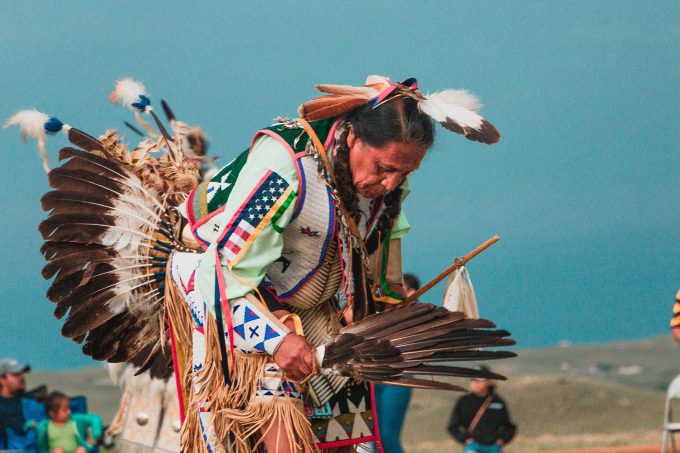Anishinaabe Inclusive Politics

The Michigan Anishinaabek (Odawa, Bodewadmi, and Ojibwe Indians) have many historic political heroes. Assiginac organized a party of Odawa ogitchidaawaag (“warriors” in Anishinaabemowin) to fight the Americans in the War of 1812. Leopold Pokagon went into a tent with military treaty negotiators in 1833 armed with a knife and came out with a treaty that preserved his community’s homelands. Aishquagonabe went to Washington, D.C. treaty negotiations in 1836 dressed in the scalps of American soldiers he collected in war alongside Assiginac to show to President Jackson and War Secretary Lewis Cass. Margaret Boyd traveled by train to Washington, D.C. to meet President Grant to talk about Indian land rights in 1876, paying her way there and back by making and selling her quillwork as she went. Arthur Duhamel went fishing throughout the 1970s and was arrested by state conservation officers hundreds of times. Frank Ettawageshik was told in 1993 by Senator McCain that he wouldn’t support a bill that would acknowledge his tribe; the senator left a legislative hearing almost in tears and ended up championing the bill.
One thing these ogimaag (“leaders” in Anishinaabemowin) and ogitchidaawaag had in common was that they were selected by their communities to lead in a specific and particular situation, with their status as ogimaag or ogitchidaa finished the moment their usefulness ended. Traditional Anishinaabe leadership was non-hierarchical. Each Anishinaabe person identified with a clan, for example, loon, deer, turtle, or fish. Each clan brought a different way of thinking about each problem. Everyone spoke. Everyone listened. Ogimaag led by example and by persuasion. They earned support by providing resources to more people than others, and often led only for short periods of time.
Anishinaabe people followed an ogema (“leader”) only as long as that ogema led successfully. The Anishinaabek were fickle and rarely followed someone based on their personality. Inawendiwin, or”relational accountability” in the phrasing of Nicholas Reo, constituted the dominant political theory. If an ogema was not making the right decisions, then the ogema would no longer lead. Aishquagonabe was selected to speak for the Odawaak in 1836 because they needed a former ogitchidaa to negotiate with America’s former warriors. Once that role was complete, Aishquagonabe stepped back and other ogimaag stepped up.
Michigan tribal government leaders are now selected by voters in elections and serve on a tribal council. Tribal constitutions that created this form of democracy also imposed a hierarchy of leadership that is foreign to traditional Anishinaabek. Political discussion moved away from a focus on the community and inawendiwin toward a focus on individual personalities and the interests of factions. This isn’t an inherently terrible thing, especially given that modern governments must interact with state, local, and federal government entities that have always been this way.
There is separation of powers, and checks and balances. Tribal councils can only act by motion, ordinance, or resolution. But there are costs. Tribal members with larger families tend to have electoral advantages. Tribal members that do not leave for work or college also tend to have electoral advantages. Leaders are not always selected based on skills or expertise, but by which person makes the best promises and receives the most votes. The clan system of talking things out and hearing all sides is all but gone.
However, many of the traditional ways remain in place. Modern tribal governments are hierarchical, with the council on top, government and enterprise directors immediately beneath them, and other tribal employees below them. In my experience working for several Anishinaabe tribes, I’ve found that many department directors are the real ogimaag, despite this hierarchy. They are civil servants, so they rise to positions of authority on their merit, skill, and experience, not unlike the ogimaag of old. Unlike council members, who serve for a term whether they are effective or not, these modern day ogimaag can be moved to better positions or replaced based on their track record.
Much of the work of modern tribal governments is to provide direct services to tribal citizens, almost like a government contractor. Tribal governments strive to do so with the same paradigm as the old governments, inawendiwin. Department and enterprise managers and their co-workers generally do impressive work, running the health clinic, housing authority, child welfare, and other programs, and they do so in culturally appropriate ways. Unlike most elected leaders, these leaders are actually doing the work. It’s a pretty good fit. Just don’t tell the council members.
Matthew L.M. Fletcher is Foundation Professor of Law at Michigan State University and a member of the Grand Traverse Band of Ottawa and Chippewa Indians.

Comments 2
Henry Smitoj
November 7, 2020In bookkeeping, the words "debit" https://dltutuapp.com/tutuapp-download/ and "credit" have very distinct meanings and a close relationship.
Protar Smith
November 7, 2020So if you complete a transaction that increases assets (and you debit the asset account), you must also increase https://showbox.run/ the equity or liability (by crediting the equity or liability account) so that Assets remain equal to Equity and/or Liability.